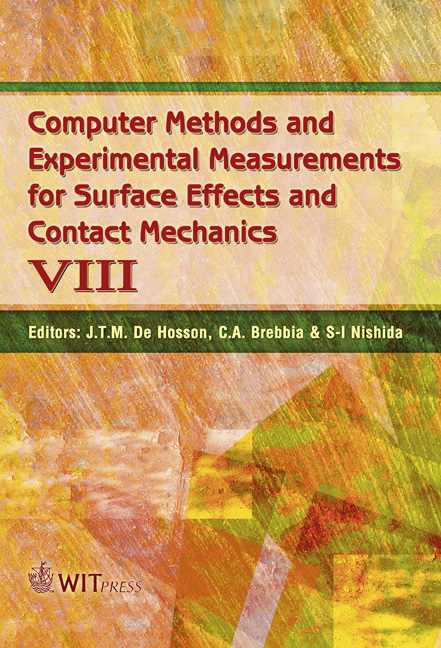Multilayer Contacts In Electrical Connectors: Experimental Results And Modelling
Price
Free (open access)
Transaction
Volume
55
Pages
10
Published
2007
Size
770 kb
Paper DOI
10.2495/SECM070091
Copyright
WIT Press
Author(s)
F. Ossart, S. Noel, D. Alamarguy, S. Correia & P. Gendre
Abstract
Electrical contacts are an essential part of electrical circuits and many reliability problems are related to their failure. The present work uses numerical simulation in view of a better analysis of the electromechanical phenomena, in the case of multilayer electrical contacts. We study a ball/plane contact made of bulk CuZn alloy, protected by a thin Sn surface layer. A coupled finite element analysis is performed in order to calculate the contact resistance of the device: an elasto-plastic model is used to determine the geometry of the contact area, then an electrical model gives the resulting constriction resistance. Results of the simulation are compared to experimental data. The respective contributions of the mechanical and electrical phenomena are analysed. Keywords: multilayer contact, finite element modelling, constriction resistance, tin coating, electric contact. 1 Introduction Electrical connector performances are closely linked to the mechanical behaviour of the contact. Much work has been devoted to understand the mechanisms involved and their complexity has been shown [1, 2]. Many contacts are made of cuprous alloys with various plating layers. Tin finishes are commonly used because they are cheap and can protect fairly well the copper substrates. This study is part of a larger one aimed at investigating and improving the properties of electroplated tin layers [3]. The contacts under study are of the ball plane type; their geometry simulates elementary contacts in connectors. They are submitted to a normal load and to the various failure tests representative of their conditions
Keywords
multilayer contact, finite element modelling, constriction resistance, tin coating, electric contact.





